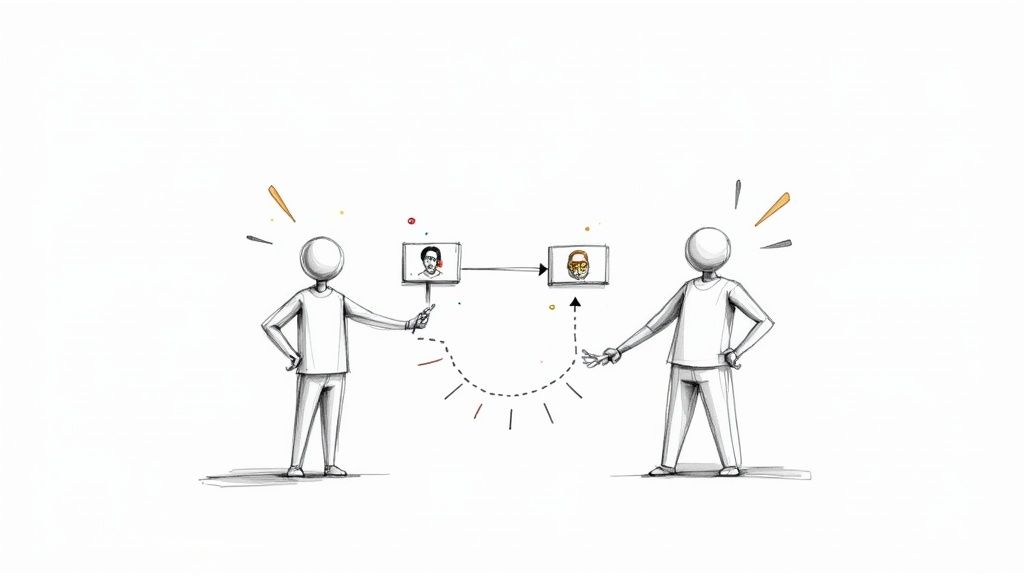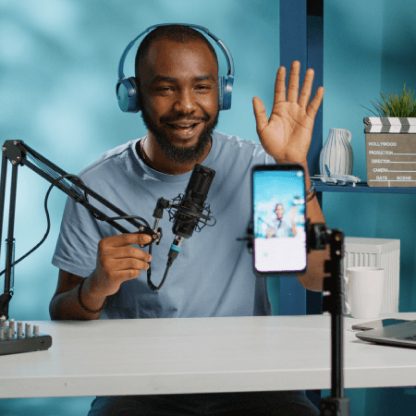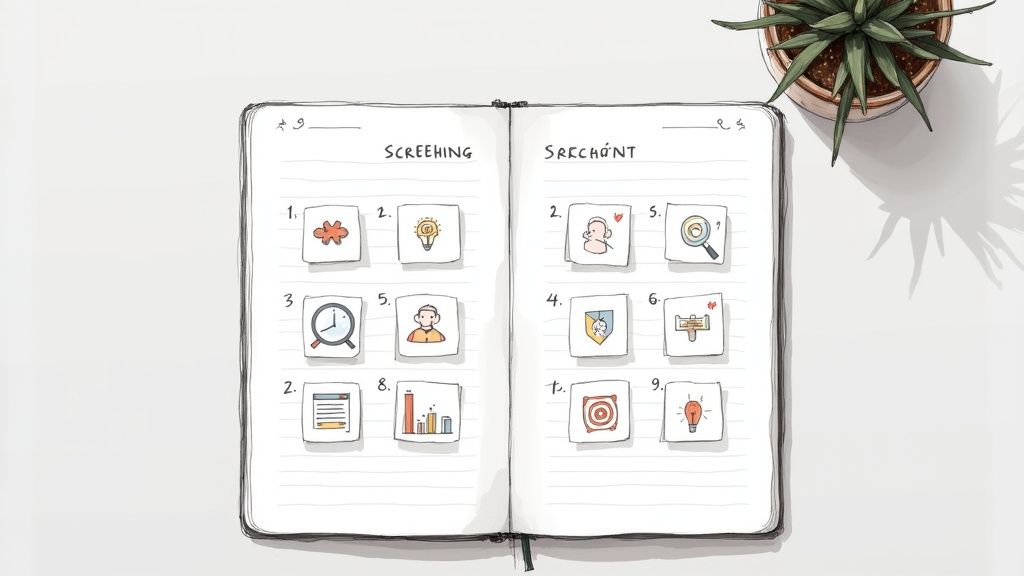In the competitive talent market of 2025, attracting applicants is only half the battle. The real challenge lies in keeping them engaged from the first touchpoint to the final offer and beyond. Traditional, passive recruitment methods are no longer sufficient. Today's candidates expect personalized, transparent, and dynamic interactions that respect their time and value their potential. Neglecting this crucial aspect leads to high drop-off rates, a damaged employer brand, and missed opportunities to hire top-tier talent.
This article moves beyond generic advice to provide a strategic blueprint for transforming your hiring process. We will explore seven innovative and actionable candidate engagement strategies that leverage technology, psychology, and authentic communication. From building proactive talent communities to implementing gamified virtual experiences, these tactics will equip your HR team to create a memorable journey that not only fills open roles but also builds a lasting pipeline of advocates for your brand. To explore more comprehensive approaches to improving candidate interactions, refer to this article on 10 Actionable Candidate Engagement Strategies for 2025. Prepare to stop losing great candidates and start building meaningful connections.
1. Strategy #1: Build a Proactive Talent Community, Not Just a Candidate Database
Transforming your recruitment approach starts by moving beyond a static, reactive candidate database. Instead, focus on cultivating a proactive talent community. This isn't just a list of past applicants; it’s an engaged ecosystem of pre-vetted individuals who have opted-in to build a long-term relationship with your brand. By nurturing this group, you create an on-demand talent pipeline, making it one of the most effective long-term candidate engagement strategies.
How It Works
A talent community is a group of potential candidates who have expressed interest in your company, even if there isn't a suitable open role at the moment. You keep them warm by consistently providing value, not just sending job alerts. This transforms the dynamic from a one-time transaction into an ongoing relationship.
The goal is to be the first company they think of when they decide to make a move. This proactive engagement significantly reduces time-to-hire and sourcing costs when a new position opens, as you already have a pool of qualified and interested candidates.
Actionable Implementation Steps
To build a thriving talent community, you need a multi-channel approach focused on value delivery.
- Segment Your Audience: Group community members by skill set, career interests, or seniority (e.g., "Future Marketing Leaders," "Senior Software Engineers"). This allows for highly personalized communication.
- Deliver Exclusive Content: Share more than just job openings. Provide valuable content such as:
- Monthly newsletters with industry trends and analysis.
- Invitations to company-hosted webinars or virtual Q&A sessions with team leaders.
- Behind-the-scenes looks at company culture, projects, and employee stories.
- Create a Dedicated Platform: Use a CRM or a specialized talent community platform to manage interactions and track engagement. This ensures no potential candidate falls through the cracks.
Key Insight: A successful talent community is built on reciprocity. You provide consistent value in the form of insights and access, and in return, you gain a loyal following of top-tier talent ready to engage when the right opportunity arises. This is a foundational element of modern candidate engagement strategies.
2. Strategy #2: Master Social Media Recruitment and Employer Branding
In today's digital-first world, your social media presence is your company's front porch. It’s where potential candidates form their first impressions long before they ever visit your careers page. Mastering social media recruitment involves more than just posting job openings; it’s about weaving your employer brand into a compelling narrative that attracts, engages, and builds genuine relationships with top talent. This approach is one of the most dynamic candidate engagement strategies available today.

How It Works
Social media recruitment leverages platforms like LinkedIn, Instagram, TikTok, and X (formerly Twitter) to showcase your company's culture, values, and employee experiences. Instead of a one-way broadcast, it creates a two-way dialogue. By sharing authentic, behind-the-scenes content and interacting directly with your audience, you transform passive job seekers into active, engaged followers of your brand.
Companies like HubSpot, known for their vibrant Instagram showcasing employee stories, and Cisco, with its powerful #WeAreCisco employee advocacy campaign, demonstrate the effectiveness of this strategy. They don't just advertise jobs; they sell an experience, making candidates feel connected to the company's mission and people before an application is even submitted.
Actionable Implementation Steps
To effectively leverage social media for recruitment, focus on authenticity and strategic content distribution.
- Empower Employee Advocates: Encourage your team to share their genuine experiences. Employee-generated content is more trusted than corporate messaging and provides an authentic window into your culture.
- Balance Your Content Mix: Follow the 80/20 rule. Eighty percent of your content should provide value through industry insights, team highlights, and cultural stories, while only 20% should be direct job advertisements.
- Engage Actively and Promptly: Social media is a conversation. Respond to comments and direct messages quickly to show you value your audience's input and time. A crucial metric for effective storytelling is direct engagement; learning how to increase LinkedIn engagement can maximize your brand's reach and impact on the world's largest professional network.
- Use Platform-Specific Formats: Tailor your content for each platform. Use short-form videos and employee takeovers on Instagram or TikTok, while focusing on professional thought leadership and company news on LinkedIn.
Key Insight: The goal of social media recruitment isn't just to fill an open role today; it's to build an employer brand that consistently attracts a pipeline of future talent. By showcasing your authentic culture and values, you create a magnetic brand that makes top candidates want to join your journey.
3. Strategy #3: Candidate Experience Optimization
One of the most powerful candidate engagement strategies is to treat every interaction as part of a larger, holistic experience. Candidate experience optimization is a comprehensive approach focused on creating positive, seamless, and memorable interactions at every touchpoint of the recruitment process. This strategy requires shifting your mindset to view candidates as you would customers, ensuring clear communication, timely feedback, and respectful treatment, regardless of the hiring outcome.

How It Works
A positive candidate experience reinforces your employer brand, encourages referrals, and can even turn rejected applicants into brand advocates or future customers. A negative one, however, can damage your reputation and deter top talent. The core principle is empathy: putting yourself in the candidate’s shoes to understand their journey, from the initial application to the final decision.
This approach goes beyond simple politeness. It involves systematically designing and refining the entire hiring funnel to be as efficient, transparent, and respectful as possible. Companies like Airbnb, known for its "Belong Anywhere" candidate experience, achieve this by creating a journey that reflects their brand values, complete with personalized touches and clear, consistent communication.
Actionable Implementation Steps
To elevate your candidate experience from a passive process to an active strategy, you need to map, measure, and improve every stage.
- Map the Candidate Journey: Create a detailed map of every touchpoint a candidate has with your company, from discovering the job ad to their first day (or receiving a rejection notice). Identify potential pain points, such as a long application form, a communication black hole after an interview, or unclear expectations.
- Train Hiring Managers: Equip your hiring managers with the skills to be brand ambassadors. Provide training on conducting structured interviews, delivering constructive feedback, and maintaining consistent, professional communication.
- Implement Feedback Loops: Use technology to your advantage. Automate status updates so candidates are never left wondering. More importantly, systematically collect feedback through post-interview and post-rejection surveys (e.g., a simple Net Promoter Score question: "How likely are you to recommend applying to a friend?"). Use this data to make tangible improvements.
Key Insight: The candidate experience doesn't end when a role is filled. Every single applicant, hired or not, leaves with an impression of your brand. By optimizing this journey, you are not just filling a position; you are building a reputation that attracts top talent organically. This makes it a cornerstone of effective, long-term candidate engagement strategies.
4. Strategy #4: Supercharge Your Pipeline with an Employee Referral Program
Leveraging your current employees as brand ambassadors is one of the most powerful and authentic candidate engagement strategies available. An employee referral program formalizes this process, creating a structured system that incentivizes your team to tap into their professional and personal networks to find high-quality, pre-vetted talent. Referred candidates are often more engaged from the start because they have a trusted, internal source providing insights into the company culture and role.

How It Works
This strategy moves beyond passive job postings by activating your most valuable asset: your people. Employees are uniquely positioned to identify individuals who not only possess the right skills but are also a strong cultural fit. A well-designed program makes it easy for them to share opportunities and submit candidates, turning your entire workforce into a proactive recruiting engine.
The core principle is mutual benefit. The company gains access to a high-quality talent pool, which can dramatically lower hiring costs and reduce time-to-fill. Employees receive tangible rewards for their successful referrals, reinforcing their own engagement and connection to the company's growth.
Actionable Implementation Steps
A successful program requires more than just a cash bonus; it needs to be simple, transparent, and rewarding.
- Simplify the Process: Use a dedicated platform or a simple, mobile-friendly form for submissions. The easier it is for employees to refer someone, the more likely they are to participate. Look at tools like ERIN or RolePoint to automate and track referrals.
- Offer Tiered and Creative Incentives: While cash is common, consider a mix of rewards. Accenture uses a tiered system with escalating bonuses for hard-to-fill roles. Tesla has offered unique rewards like company products, creating a more memorable incentive.
- Communicate and Recognize: Keep referrers updated on their candidate's status throughout the hiring process. Publicly recognize top referrers in company meetings or newsletters to celebrate their contributions and encourage others to participate.
- Train Your Team: Equip your employees with clear guidelines on what makes a great candidate for specific roles and for the company culture. This ensures the referrals are high-quality and well-aligned from the start.
Key Insight: An employee referral program is more than a sourcing tactic; it's a testament to your company culture. When employees are willing to recommend their workplace to their network, it sends a powerful message about their own satisfaction and engagement, making it a cornerstone of effective candidate engagement strategies.
5. Strategy #5: Implement Recruitment Marketing Automation
To scale your engagement efforts without sacrificing personalization, implementing recruitment marketing automation is essential. This strategy involves using technology to automate, personalize, and track candidate communication at every stage of the hiring journey. It applies proven marketing principles to recruitment, allowing you to nurture relationships with a large volume of candidates efficiently. This approach ensures no one feels forgotten, making it one of the most powerful modern candidate engagement strategies.
How It Works
Recruitment marketing automation uses platforms to create automated communication workflows triggered by specific candidate actions or timelines. For instance, a candidate who applies for a software engineering role could automatically receive content about your tech stack and team culture. If they aren't hired, the system can add them to a "Future Tech Talent" nurture campaign, keeping them engaged for future openings.
This technology allows you to send the right message to the right person at the right time, all without manual intervention. By automating routine touchpoints, recruiters can focus their energy on high-value activities like interviewing and building relationships with top-priority candidates.
Actionable Implementation Steps
Effectively deploying automation requires a strategic, phased approach to maintain a human touch.
- Start with Simple Workflows: Begin with basic automation, such as sending an immediate application confirmation email or a follow-up message a week after a role closes.
- Segment Your Candidate Pools: Just like a talent community, segment your database by factors like role applied for, skill set, or stage in the pipeline. This allows you to send highly relevant, targeted content.
- A/B Test Your Messaging: Regularly test different email subject lines, content, and calls-to-action to see what generates the highest engagement. Small tweaks can lead to significant improvements.
- Combine Automation with Human Touch: Automation should supplement, not replace, human interaction. Use it to handle routine communication, freeing up recruiters to send personalized follow-ups to high-potential candidates.
Key Insight: The power of recruitment marketing automation lies in its ability to deliver a personalized experience at scale. It ensures consistent, timely communication that makes every candidate feel valued, even when you’re managing hundreds of applications. This blend of technology and thoughtful outreach strengthens your employer brand and keeps your talent pipeline warm.
6. Strategy #6: Embrace Video Recruitment and Virtual Engagement
In an increasingly digital world, relying solely on text-based job descriptions and traditional phone screens is no longer enough. To capture the attention of top talent, companies must embrace video and virtual tools to create more personal, accessible, and dynamic recruitment experiences. This approach humanizes your brand, breaks down geographical barriers, and provides a richer, more authentic view of your company culture, making it a cornerstone of modern candidate engagement strategies.
How It Works
Video recruitment moves beyond static text to show, not just tell. It uses various video formats, from job postings and employee testimonials to virtual office tours and asynchronous interviews, to connect with candidates on a deeper level. This strategy makes the application process more interactive and engaging, offering a preview of the company’s personality and work environment long before an offer is made.
The goal is to provide a high-touch, memorable experience that stands out from the competition. Companies like PwC leverage video interview platforms for graduate recruitment, allowing them to assess communication skills and personality more effectively. Similarly, Deloitte offers virtual reality office tours, giving remote candidates an immersive experience of their workspace.
Actionable Implementation Steps
Integrating video effectively requires a strategic approach that prioritizes authenticity and accessibility.
- Create Authentic Video Content: Showcase your culture with genuine employee testimonials, behind-the-scenes footage, or a “day in the life” series. Heineken’s ‘The Candidate’ campaign is a prime example of creative, engaging video that tests candidates’ personalities in real-time.
- Implement Asynchronous Video Interviews: Use platforms like HireVue or Spark Hire to allow candidates to record answers to preset questions on their own time. This provides flexibility and helps assess communication skills early on. For a guide on helping candidates succeed, you can learn more about crucial virtual interview tips.
- Host Virtual Events and Q&A Sessions: Organize live webinars or Q&A sessions with team leaders or executives. Automating the invitation and follow-up process for these events is key to maximizing attendance and engagement. For a deeper dive into how automation can transform engagement strategies, consider insights from articles on mastering event marketing automation.
Key Insight: Video is a powerful tool for conveying authenticity and culture in a way that text cannot. By integrating it throughout the recruitment funnel, you create a more human-centric and memorable journey that builds a strong connection with candidates, regardless of their location.
7. Strategy #7: Implement Gamification and Interactive Assessments
Move beyond traditional, often tedious, application and screening processes by incorporating gamification. This strategy infuses game-like elements, challenges, and interactive experiences into recruitment to make it more engaging and insightful. It transforms a one-sided evaluation into a dynamic, two-way street where candidates can showcase their abilities in a practical context, offering a far richer data set than a standard resume.
How It Works
Gamified assessments use interactive challenges, simulations, or puzzles to evaluate a candidate's cognitive abilities, problem-solving skills, and even behavioral traits. For instance, a candidate for a consulting role might play a game like PwC's Multipoly, which assesses business acumen and strategic thinking. This approach not only provides a more accurate measure of on-the-job potential but also significantly improves the candidate experience, making the process memorable and enjoyable.
This method is one of the most innovative candidate engagement strategies because it provides immediate value to the applicant. They get an authentic glimpse into the types of challenges the role involves, while employers gather objective, data-driven insights that can reduce unconscious bias. Companies like L'Oréal have successfully used business games to attract and assess top-tier graduate talent.
Actionable Implementation Steps
To effectively integrate gamification, ensure the experience is relevant and adds genuine value.
- Align Games with Job Competencies: The assessment must directly relate to the skills required for the role. For example, use a resource allocation game for project manager candidates or a logic puzzle for software developers. This ensures the data collected is a valid predictor of job performance.
- Keep it Brief and Accessible: Design assessments to be completed in a reasonable timeframe (e.g., 15-20 minutes) to maintain candidate interest and momentum. Offering tutorials or practice rounds can help level the playing field and reduce anxiety.
- Analyze and Iterate: Use data from platforms like Pymetrics or Arctic Shores to not only evaluate candidates but also to refine the assessments themselves. Track metrics like completion rates and correlation with on-the-job success to continuously improve the process and standardize your findings. The results from these games can be a powerful addition to a comprehensive interview evaluation form.
Key Insight: Gamification is not about making hiring a trivial game; it's about creating a more valid and engaging assessment environment. When done right, it uncovers a candidate's true potential and cultural fit far more effectively than a traditional application, providing a competitive advantage in attracting top talent.
Candidate Engagement Strategies Comparison
| Strategy | Implementation Complexity 🔄 | Resource Requirements ⚡ | Expected Outcomes 📊 | Ideal Use Cases 💡 | Key Advantages ⭐ |
|---|---|---|---|---|---|
| Talent Communities and Talent Networks | Moderate to High 🔄🔄 | High ⚡⚡ | Long-term candidate pipeline, better candidate quality 📊📊 | Building passive talent pools, employer branding | Reduces time-to-hire, cost-effective, strong relationships ⭐⭐ |
| Social Media Recruitment and Employer Branding | Moderate 🔄 | Moderate ⚡ | Increased brand visibility, engagement with passive candidates 📊 | Employer branding, engaging younger demographics | Authentic brand presence, two-way communication ⭐⭐ |
| Candidate Experience Optimization | High 🔄🔄🔄 | High ⚡⚡ | Improved employer brand reputation, higher referrals 📊📊 | Hiring process improvement, candidate retention | Enhances candidate engagement, reduces drop-off ⭐⭐⭐ |
| Employee Referral Programs | Low to Moderate 🔄 | Moderate ⚡ | Faster hires, better cultural fit, higher retention 📊 | Filling key roles quickly, leveraging employee networks | Higher quality hires, lower cost-per-hire ⭐⭐⭐ |
| Recruitment Marketing Automation | High 🔄🔄🔄 | High ⚡⚡ | Scalable personalized communication, improved engagement 📊 | Large scale nurturing, multi-channel candidate management | Efficient engagement, detailed analytics ⭐⭐ |
| Video Recruitment and Virtual Engagement | Moderate to High 🔄🔄 | Moderate to High ⚡⚡ | More personal candidate experience, global reach 📊 | Remote hiring, engaging visual content | Personalization, efficiency, appeals to younger candidates ⭐⭐ |
| Gamification and Interactive Assessments | High 🔄🔄🔄 | High ⚡⚡ | Better skill insight, engaging candidate experience 📊 | Skills assessment, reducing hiring bias | Reduces bias, improves engagement, diversity boost ⭐⭐ |
From Strategy to System: Embedding Engagement into Your Hiring DNA
We've explored a powerful collection of candidate engagement strategies, moving from the foundational importance of talent communities to the dynamic potential of gamified assessments. The journey through these seven tactics reveals a crucial truth: modern recruitment is no longer a linear process of posting a job and waiting for applicants. It is an intricate, ongoing conversation with potential hires, and every touchpoint matters.
The true power of these approaches is not in their isolated application but in their integration. Think of them as interconnected gears in a high-performance engine. Your compelling social media content feeds your talent network, while your recruitment marketing automation nurtures those leads. A streamlined candidate experience, optimized for clarity and respect, is further enhanced by the flexibility of video recruitment tools. Each strategy amplifies the others, creating a virtuous cycle of engagement.
The Shift from Tactics to an Ecosystem
The ultimate goal is to evolve beyond a checklist of disjointed activities. Instead, you should aim to build a cohesive, candidate-centric ecosystem where every element is purposefully designed to attract, engage, and delight top talent. This systemic approach transforms your hiring function from a reactive necessity into a proactive, strategic advantage.
- Connect the Dots: Map how a candidate might interact with multiple strategies. For example, a candidate sees an employee story on LinkedIn (Social Media), joins your talent community (Talent Network), receives a personalized update (Marketing Automation), and then completes a video interview (Video Recruitment).
- Measure Holistically: Instead of just measuring "time-to-hire," start tracking "candidate satisfaction scores," "talent community engagement rates," and "offer acceptance rates" across the entire journey. This provides a much richer picture of what's working.
- Empower Your Team: Equip your recruiters with the tools and training to master these strategies. Their ability to build genuine relationships is the human element that makes the technology effective.
Mastering these candidate engagement strategies is about more than just filling open roles faster. It's an investment in building a resilient employer brand, a sustainable talent pipeline, and a formidable competitive edge. You are constructing a reputation as an employer of choice, one that attracts and retains the best people not just for today's vacancies, but for the challenges and opportunities of tomorrow. The future of recruitment is fundamentally engaged, and it begins with the deliberate, strategic choices you implement now.
Ready to elevate your virtual engagement and provide a world-class experience? Async Interview offers a powerful platform for asynchronous video interviews, allowing you to connect with candidates on their schedule while gaining deeper insights. Discover how our tools can seamlessly integrate into your candidate engagement strategies by visiting Async Interview to see how it works.




